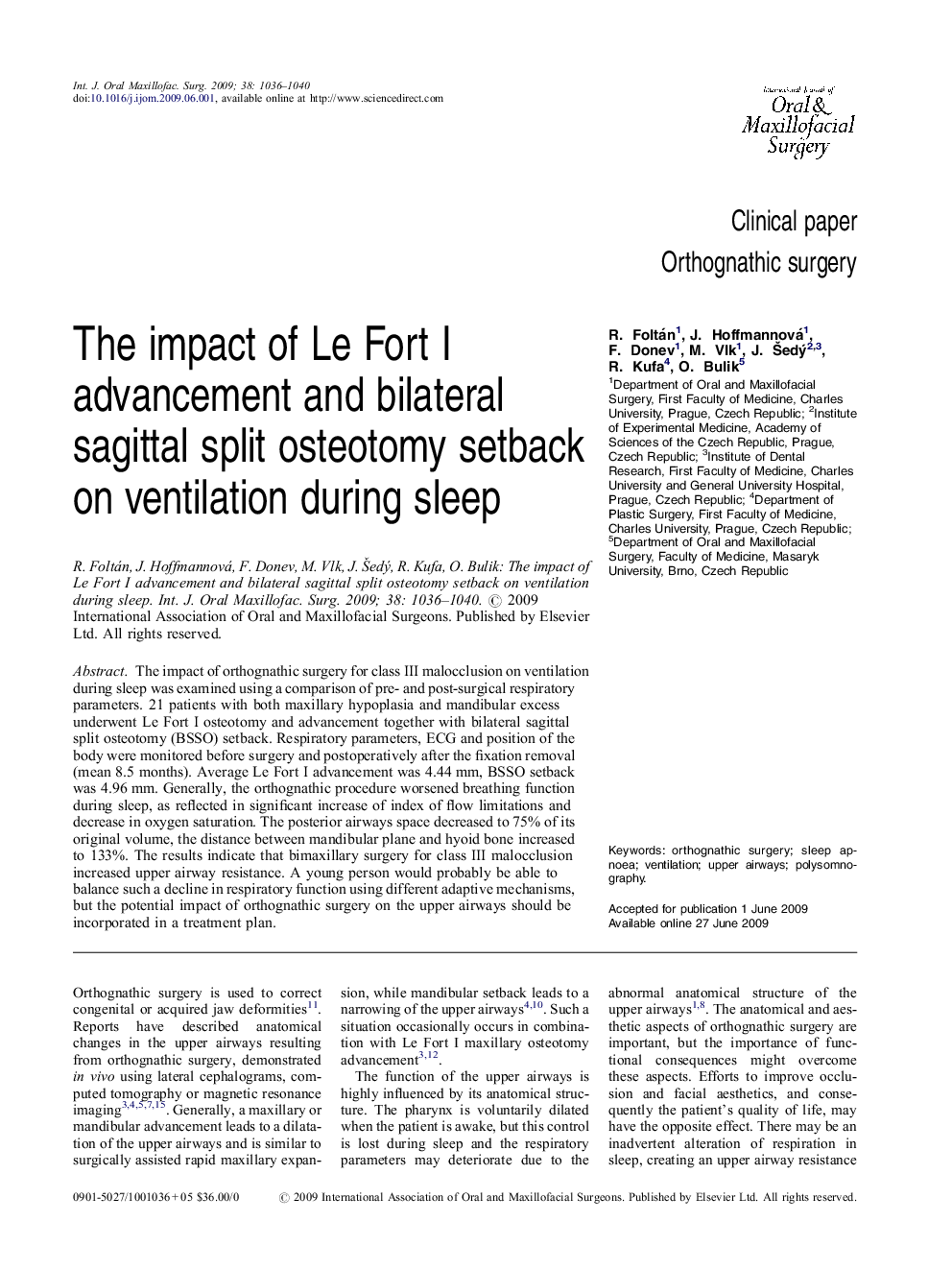| Article ID | Journal | Published Year | Pages | File Type |
|---|---|---|---|---|
| 3133763 | International Journal of Oral and Maxillofacial Surgery | 2009 | 5 Pages |
The impact of orthognathic surgery for class III malocclusion on ventilation during sleep was examined using a comparison of pre- and post-surgical respiratory parameters. 21 patients with both maxillary hypoplasia and mandibular excess underwent Le Fort I osteotomy and advancement together with bilateral sagittal split osteotomy (BSSO) setback. Respiratory parameters, ECG and position of the body were monitored before surgery and postoperatively after the fixation removal (mean 8.5 months). Average Le Fort I advancement was 4.44 mm, BSSO setback was 4.96 mm. Generally, the orthognathic procedure worsened breathing function during sleep, as reflected in significant increase of index of flow limitations and decrease in oxygen saturation. The posterior airways space decreased to 75% of its original volume, the distance between mandibular plane and hyoid bone increased to 133%. The results indicate that bimaxillary surgery for class III malocclusion increased upper airway resistance. A young person would probably be able to balance such a decline in respiratory function using different adaptive mechanisms, but the potential impact of orthognathic surgery on the upper airways should be incorporated in a treatment plan.
